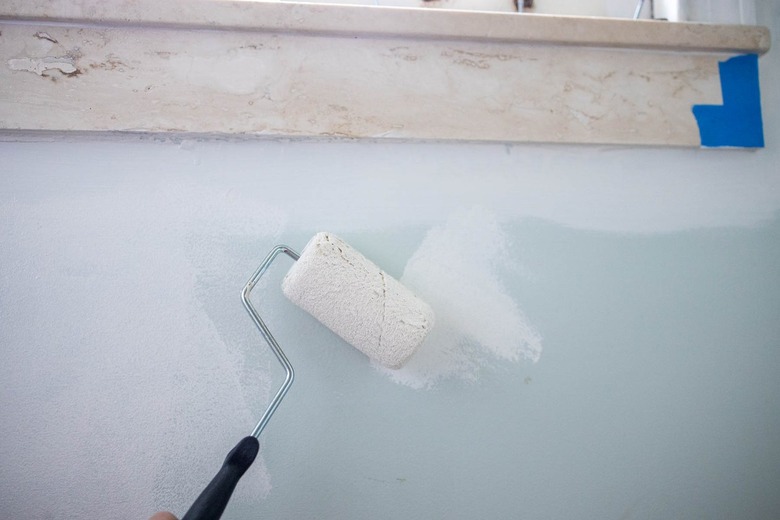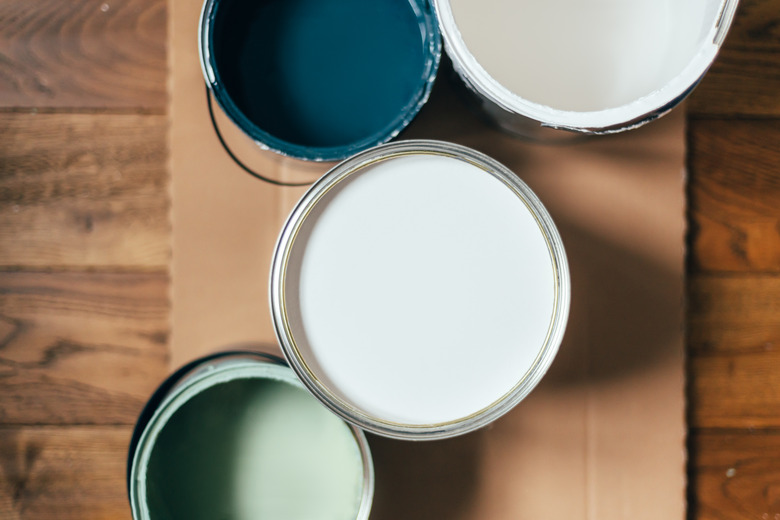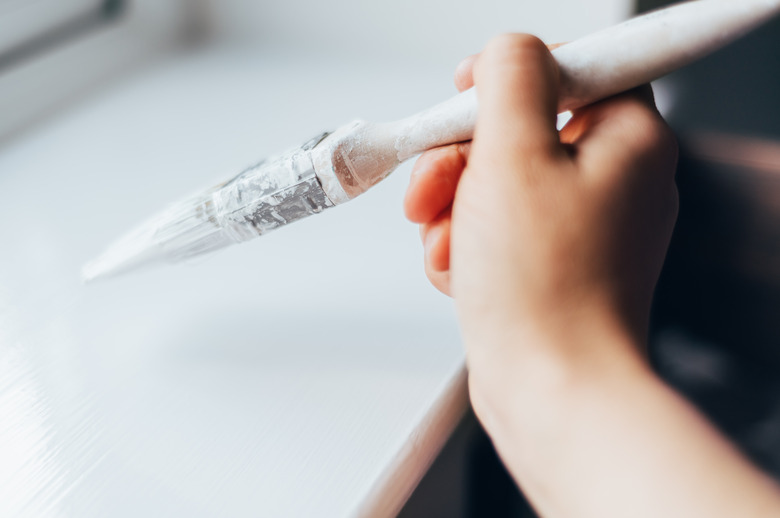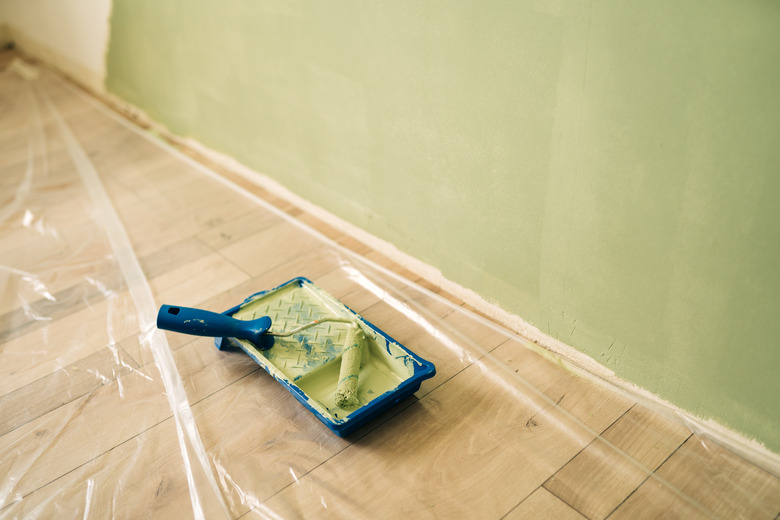Should You Paint The Trim First Or The Walls? Here's What To Consider
We may receive a commission on purchases made from links.
It's a dilemma as unsolvable as the chicken or egg debate: When painting, do you paint the walls first or the trim first? The good news is that this question doesn't have a wrong answer. You can paint your wall and trim in whatever order you like. There are pros and cons to each method, so you can choose the painting order that seems the easiest or most logical to you and your paint job and have at it.
The Straight Answer
The Straight Answer
The absolute easiest way to paint trim (think baseboards, wainscoting, molding, and other decorative pieces installed along the edges of walls, doors, and windows) is to do it before you even install it. If you're replacing your existing trim, paint the walls first and paint the new trim separately. When everything is dry, you can install the trim, caulk the joints, and fill and touch up the nail holes as needed. This method, when feasible, saves time and prevents accidentally getting trim paint on the walls or wall paint on the trim.
Although this is the best and easiest way to paint trim, don't remove it if it's already installed. Doing so can damage the wall and/or the trim, especially if the trim is old and somewhat brittle.
The Paint Choice Method
The Paint Choice Method
Some homeowners decide the order in which to paint based on the colors they're using. It's much easier to cover a light color than a dark one. As such, many painters paint the lighter color first. This makes mistakes easier to cover later. If your trim is white but your wall will be dark, paint the trim first. Any splatters and other mistakes that get on the wall will be easy to cover with the darker color. A lighter color may need more than one coat of paint during touch-up to successfully cover a mistake made with a dark color.
The same is true if you're using two different finishes. If you're using a glossy finish on one surface and a satin or matte finish on the other, for example, paint the glossy finish last. Paint adheres to matte surfaces more easily than glossy ones, so it's easier to cover mistakes with the glossy paint. Trying to cover glossy mistakes is much more difficult.
Reasons to Paint Trim First
Reasons to Paint Trim First
- It's faster and easier to cut in your paint when painting on the wall than the trim. Painting trim is delicate work, which makes it more difficult to paint it without coloring outside the lines a bit. Because of this, you're likely to get a cleaner line if you do the wall after the trim, especially if you're not using tape to mask off the trim or wall.
- If you are using painter's tape, it's faster to tape off the trim than it is to tape the walls. When your trim paint dries, you can do a quick tape job on it before painting the walls. It's also safer to tape off the trim than it is to tape the wall. Painter's tape doesn't always come away as cleanly as it should, and it has been known to damage drywall.
- Painting trim is a more difficult and time-consuming DIY than painting walls is. Some homeowners prefer to get the slower, more tedious work out of the way first while they're still fresh, rested, and amped up about their home improvement project.
Reasons to Paint Walls First
Reasons to Paint Walls First
- You should paint the walls first if you're a little iffy on the wall color. If you start to paint the wall and decide you don't like that paint color after all, painting the walls first makes sense. If you end up choosing a new wall color, you may also opt for a different trim color too.
- You may also want to paint the walls before the trim to take advantage of available help. Let's say, for example, that your friend Bob is willing to help you paint. Unfortunately, Bob isn't much of a painter. If Bob is available today, you may want to embrace the help but paint walls with him rather than the more detail-oriented trim.
- Sometimes, when using a roller on the walls, tiny drips or splatters of paint come off the roller and fall on the trim. This is frustrating if your trim is already painted, and it means you'll have to go back and repaint parts of the trim. If you do the trim last, you can just paint over these speckles with your trim paint.
- Painting the walls first will give you instant gratification. Some homeowners need to see progress to stay motivated during a project, and painting the walls first will create a more dramatic change. Painting is a pretty big task, so go ahead and paint the walls first if that's what you need to stay motivated.



